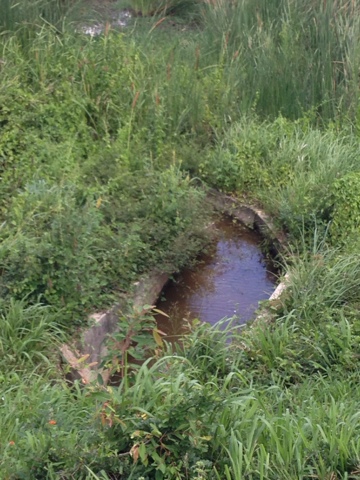My Fulbright project is focused on a study of transitional landscapes in a Sri Lankan context. More to the point: I am studying intangible landscape features-sounds, aromas, movement, curves, etc. to develop questions about the urban and rural settings I observe. It's an exercise of delving into the unknown. Everything is based on observation and conjecture. My only "hard facts" are the things I observe, the photos I take, and the recordings I make. Quite a leap of faith for a scientist. Or is it?
The former director of the National Museums of Ceylon, the Cambridge- and Harvard-educated P. E. P. Deraniyagala stated in his article "The Sinhala Sculptor's Science of Joining," that his conclusions in that particular paper were "largely a matter of deduction and conjecture."
Scientists study the natural world. We develop tools to measure what we observe because often what we observe can't be described through common means. Or we know something is "out there" that we need to find. We may not know what it is or where it is. But our work is to find it. And to describe it. Pretty radical if you think about it.
Take the work commonly attributed to Watson and Crick. On the shoulders of their many predecessors these scientists elucidated the DNA molecule in order to get at intractable problems of heredity. We still don't know everything about heredity and its role in evolution but we know a lot more than we did in 1953 when the shape and contents of DNA were first brought to light.
The many scientists who unraveled the mystery of DNA were taking a stab in the dark. They were delving into an unknown where their observations and the tools they developed were the only thing they had to go on. Their work at least in part had to be based on conjecture. Their findings radicalized our understanding of DNA because their task was radical in itself. How do you find and describe something you know almost nothing about?
Consider another scientific model--the cellular membrane model developed by Singer and Nicolson. They knew there were membrane systems in every cell of every living being. Yet the structure and functions of cellular membranes were unknown until their groundbreaking work in 1971. The list goes on in a timeline that precedes "the scientific era" back toward the first toolmakers or the first cultivators. And it zooms into the future with scientific inquiry into energy, space, climate, and of course evolution. Scientists do radical stuff. Human invention is radical stuff. As we change our understanding of the world around us we change how we function in it. Pretty cool.
In my opinion there are also sidetracks in inquiry that may be less valuable. In my experience as a botanist I found the reductionist focus on phylogeny and cladistics to be a sorry waste of a whole community's resources. Yes we want to understand plant evolution. But nearly all of my peers at the time I was active in plant research insisted that the only way to do it was through phylogenetic analysis of ribosomal molecular structures. I was looking at problems of shape and form, taking a broad view that drew all of its information from the organisms themselves. No "theory" to test. My goal was only to gather data to see how they fit together. Taking risks in inquiry is the way we move science forward--this is at odds with the way I experienced scientific practice--everyone jumping on the same bandwagon.
I'm not putting myself at the level of great scientists but yes, I am comparing my work to theirs. I think what I'm doing here in Sri Lanka is radical work. Radically different from what a lot of the rest of the research community is doing here.
I'm not sure why but there seems to be a huge research focus on politics. You might consider politics, like landscape, to be intangible. But there is a lot a researcher can grab onto. Maybe that's why people study politics in this country that is so full of intangibles. Religion is another area. Certainly it's very important in a Sri Lankan context. But I wonder how and if it holds a key to understanding Sri Lanka. There's a world, or I should say there are worlds here to explore. Let us find them and try to uncover them. Again I take the example of Deraniyagala. In the diagram above he illustrated the way parts of sculptures in this country were joined. Who knows what light this may shed on other topics, for example the sculptural qualities of agricultural implements here. Or the way a channel is dug in the countryside.
So here's my point. I've been given an awesome opportunity to learn from a place and people of which I had no prior knowledge. The tools I'm using are observation and recording. There are limits to this mode of inquiry and its outcome is perhaps uncertain. But the goal is to open new doors of thought by generating unexpected questions. There are so many ways to explore this world. Why limit ourselves? A radical approach to a radical problem: how do you delve into the unknown?





No comments:
Post a Comment